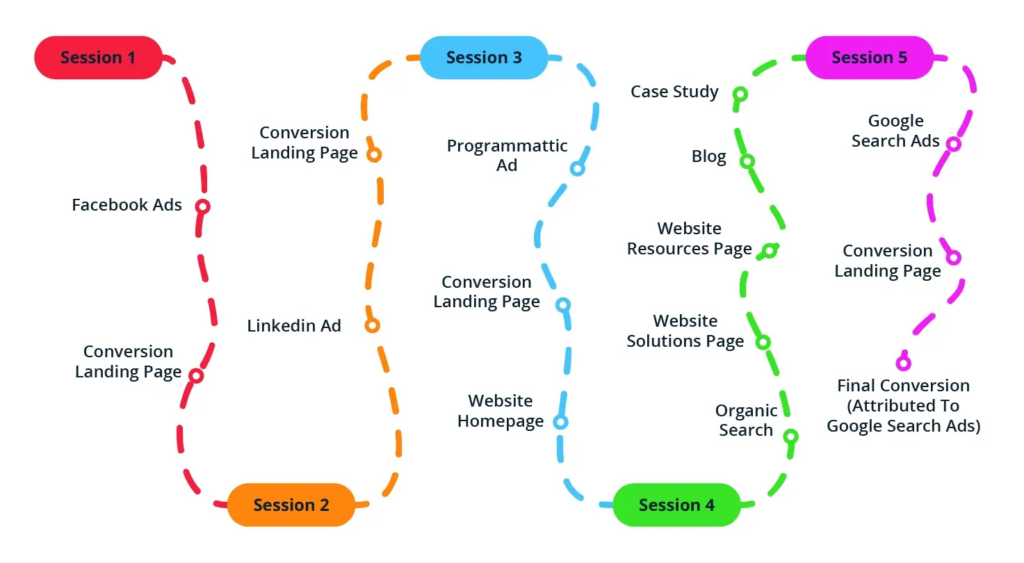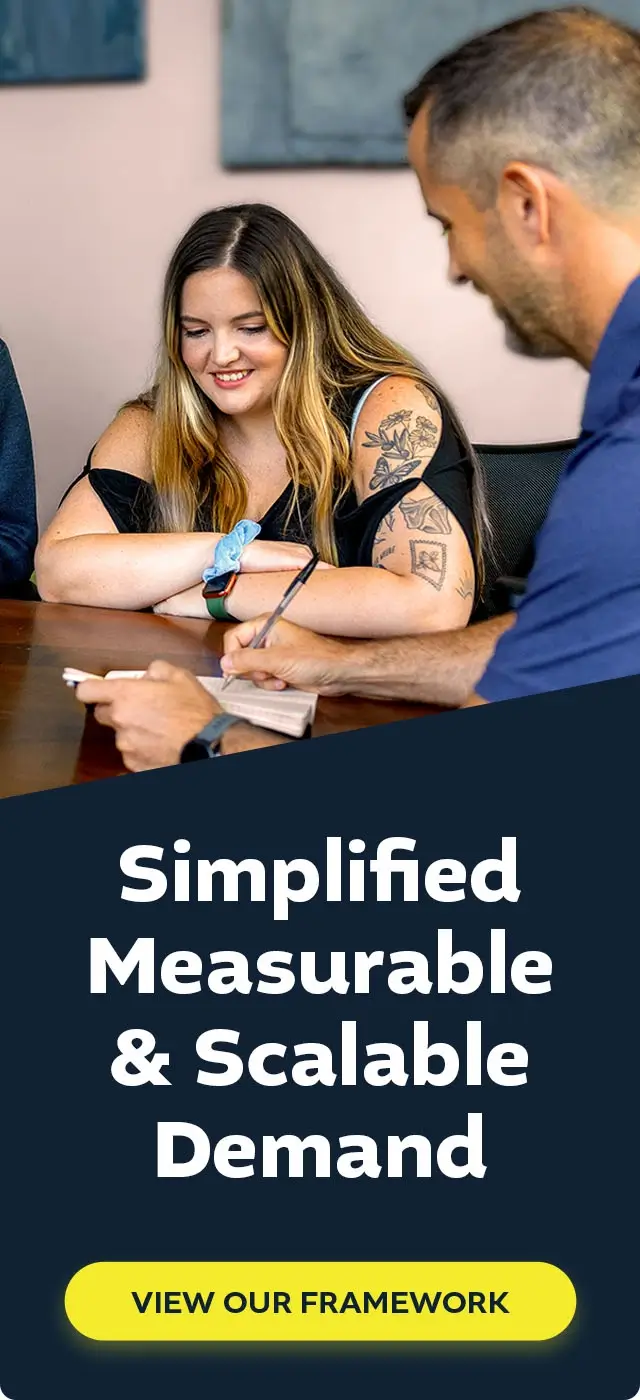Let’s talk about a potential nightmare scenario for a growth marketer…
Your client asks which platform is capturing the most conversions for a campaign, and you (perhaps begrudgingly?) mutter “Google Search ads.”
Your stomach drops as they ask the question you knew was coming next: “Why don’t we spend the digital ads budget on only Google Search ads?”
Oh boy.
There’s a perfectly legitimate path forward for this conversation that gives you what YOU want as a growth marketer while keeping the CLIENT informed and on board with the strategy you created at the outset.
Explaining the Multi-Touch Point User Journey to a Non-Growth Marketer
First, take a deep breath because you’re about to have to explain the multi-touchpoint journey in simple terms.

Yes, that journey… the one which entails how potential customers interact with your brand across different channels before converting. Caution your client that it’s not just about someone typing in a keyword and finding your product on Google Search. There’s a whole lot more to it.
Use a relatable example with your client… Here’s one: let’s say you’re in the market for a self-service kiosk for your restaurant. You start by searching on Google and are served with several different sponsored and organic click options.
Maybe you even go as far as to click on an ad from a self-service kiosk company; let’s be real, you’re not ready to make a decision yet. In fact, Moz estimates that a new visitor takes seven-and-a-half visits to a website before they engage in a free trial offer. So, just like them, you close your laptop and forget about it (for now).
A new visitor takes seven-and-a-half visits to a website before they engage in a free trial offer.
MOZ
A week later, you’re scrolling through social media, and you see an ad for a self-service kiosk that catches your attention. Maybe it’s from a brand you recognize, or maybe it’s just something about the ad that speaks to you. Now you’re back on Google Search, typing in the brand name to learn more about their product.
Here’s the thing: most people don’t convert on the first touchpoint. They need to be educated and warmed up to your brand before they’re ready to commit. That’s why you can’t rely solely on Google Search ads to scale your demand generation marketing efforts. You need to be present on other platforms too, like Facebook and LinkedIn.
The Key To Success is Education
The key is to use audience targeting to capture the intent of the right people as they’re scrolling through their feeds. Sure, they might not convert on your Facebook ad, but if you educate them on the landing page and retarget them with another ad, they might come back and convert on Google Search later. It’s all about building a relationship with potential customers over time.
But why is the multi-touchpoint journey so important for B2B companies to understand? Well, B2B sales cycles are typically longer and more complex than B2C sales cycles. There are often multiple decision-makers involved, and the stakes are higher. That’s why it’s crucial to nurture potential customers at every touch point, from the first ad they see on Facebook to the moment they convert on Google Search.
The Art of Anticipation for Growth Marketing Agencies
How do you know which platforms to choose and when to use them?
Think of it like a game of chess. You can’t just make one move and expect to win. You need to plan ahead and think about your opponent’s next move too. In marketing terms, that means anticipating your potential customers’ needs and being present on the channels where they’re most likely to be. It’s a multi-dimensional approach that requires both strategy and agility.
So, what’s the bottom line? Your client shouldn’t put all their eggs in one basket, especially when it comes to demand generation marketing. Yes, Google Search is important, but it’s just one piece of the puzzle. They need to be present on other platforms too and use the appropriate audience targeting to capture the intent of the right people.
And remember, it’s not just about the first touch point. It’s about building a relationship with potential customers over time and nurturing them at every touch point along the way.
So, take a deep breath and explain to your client why they should embrace the multi-touchpoint journey. Explain that it might be complicated, but it’s also an opportunity to build lasting relationships with your audience.


